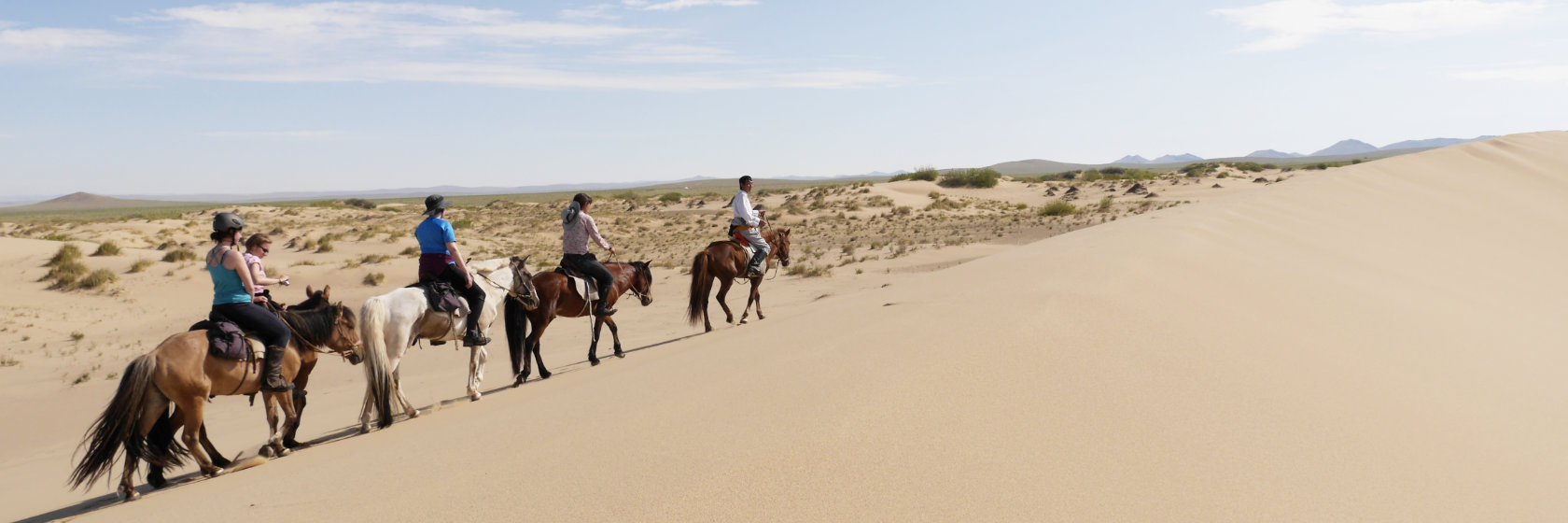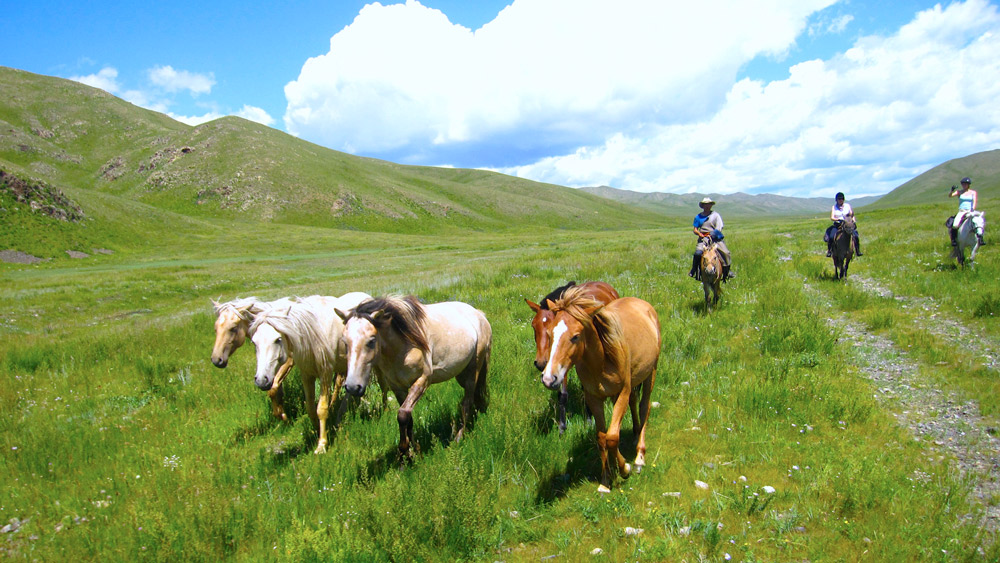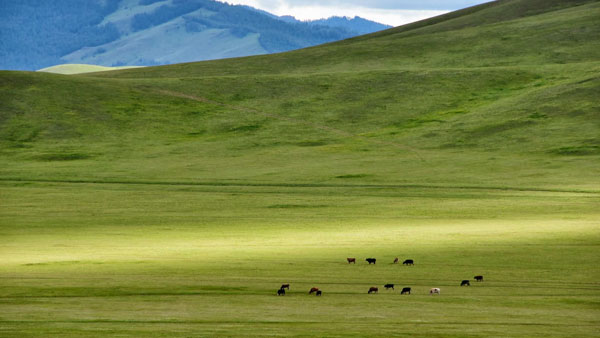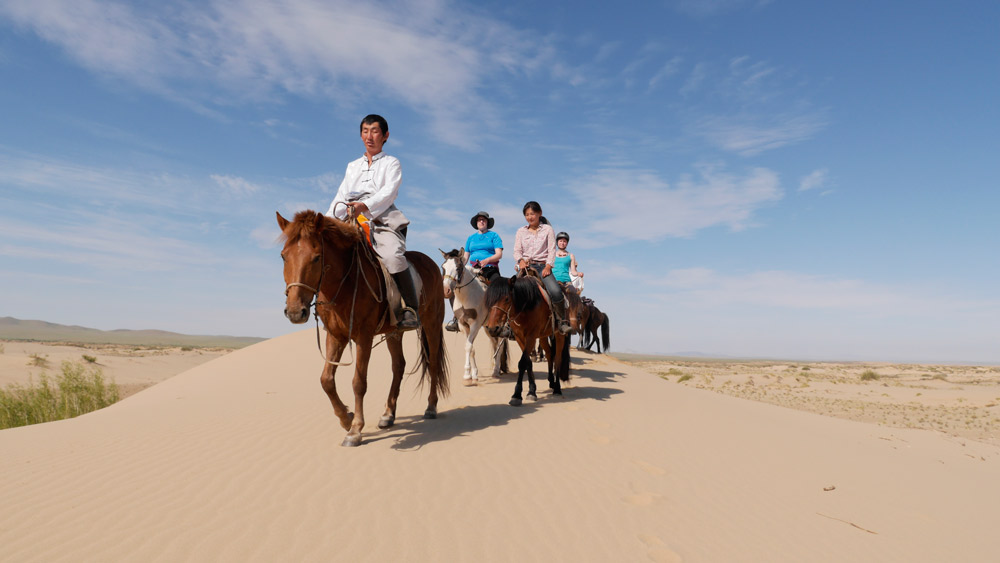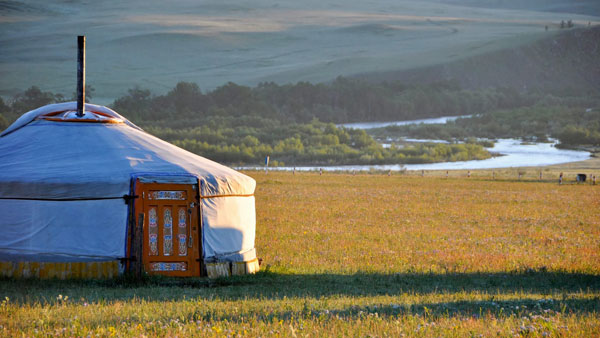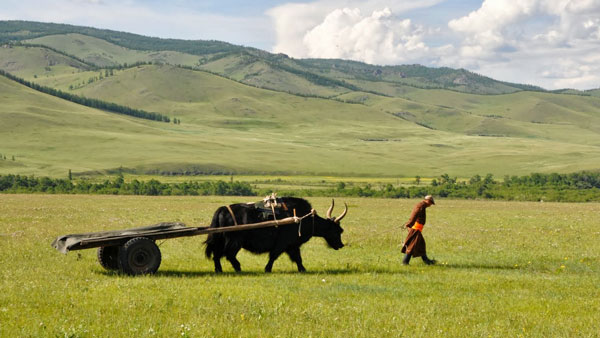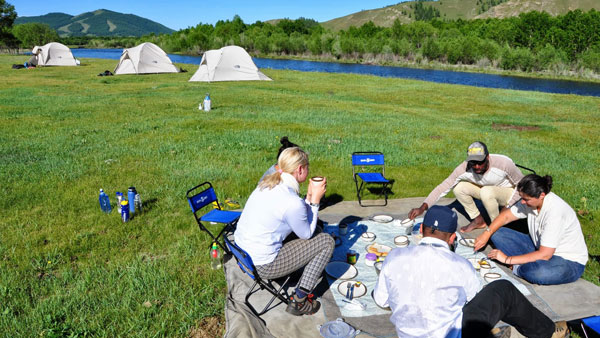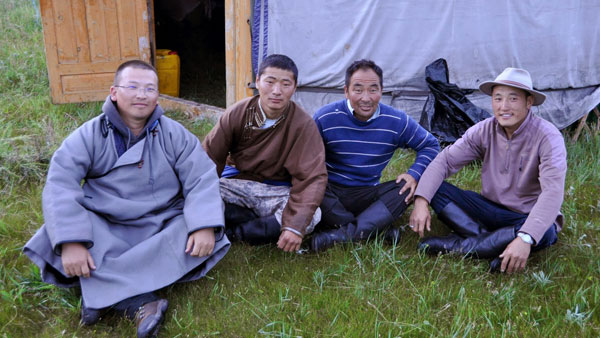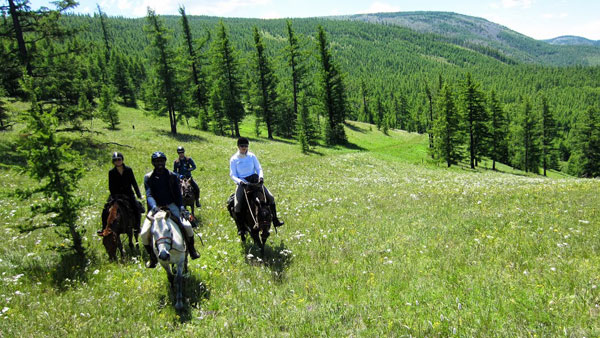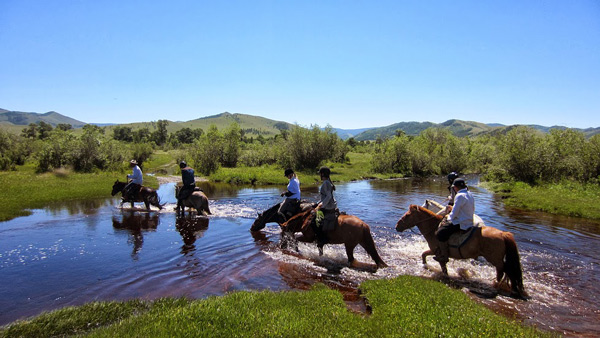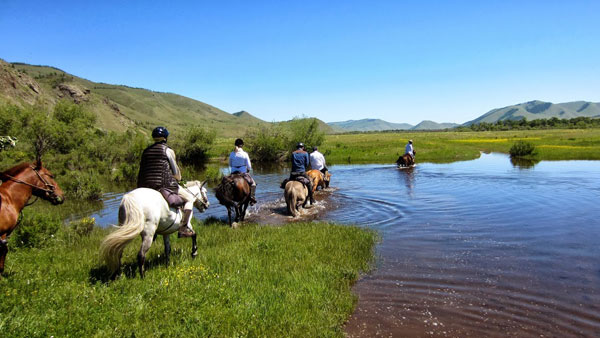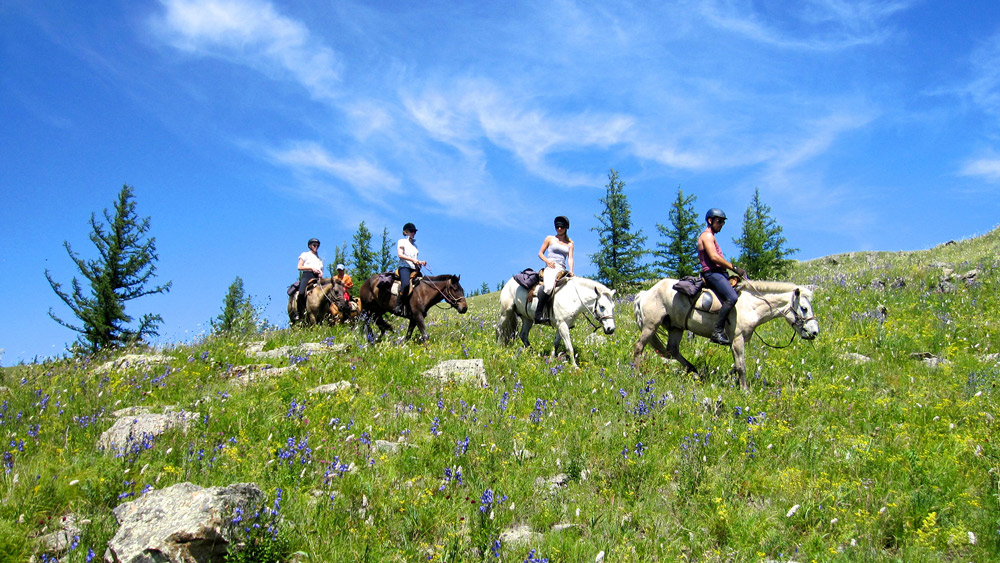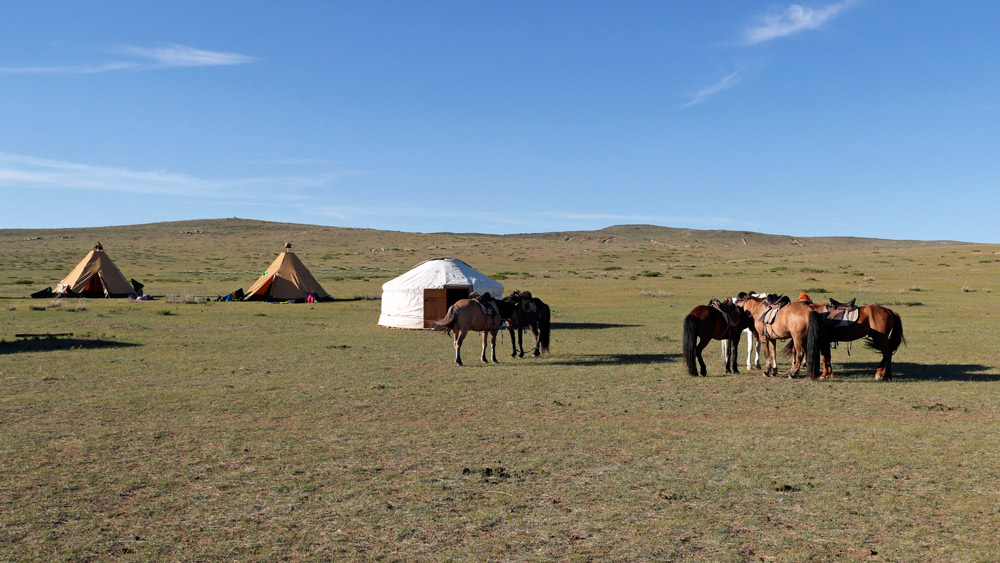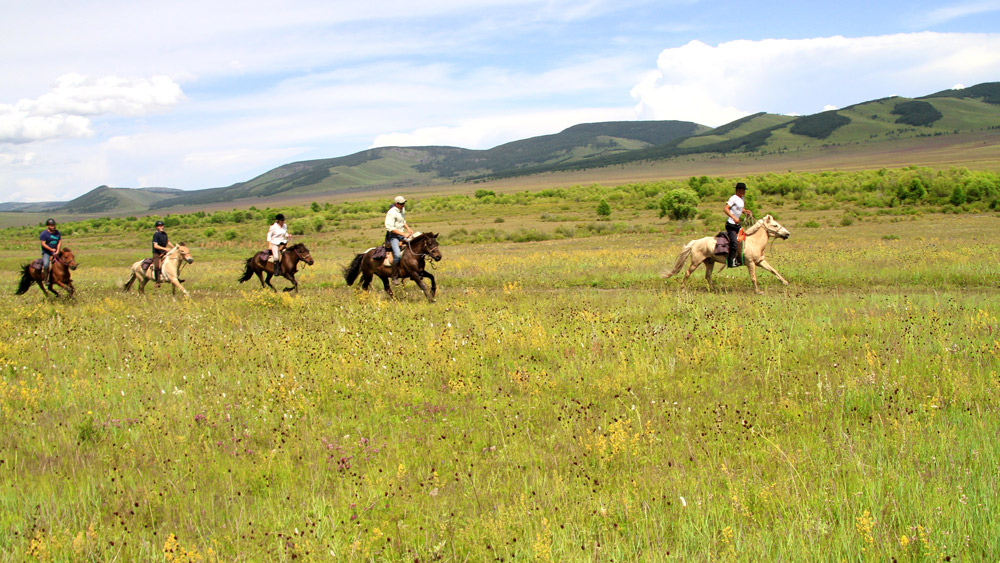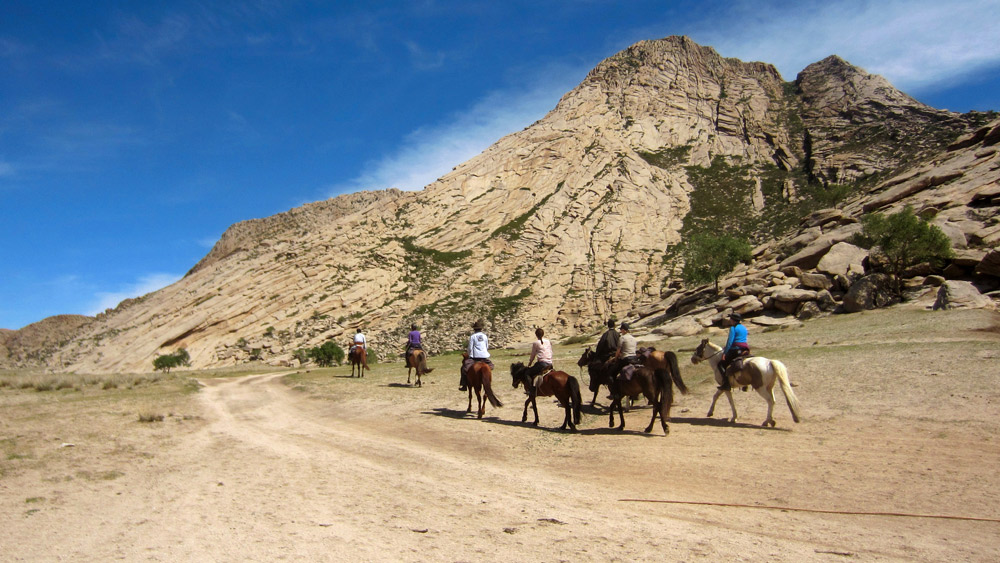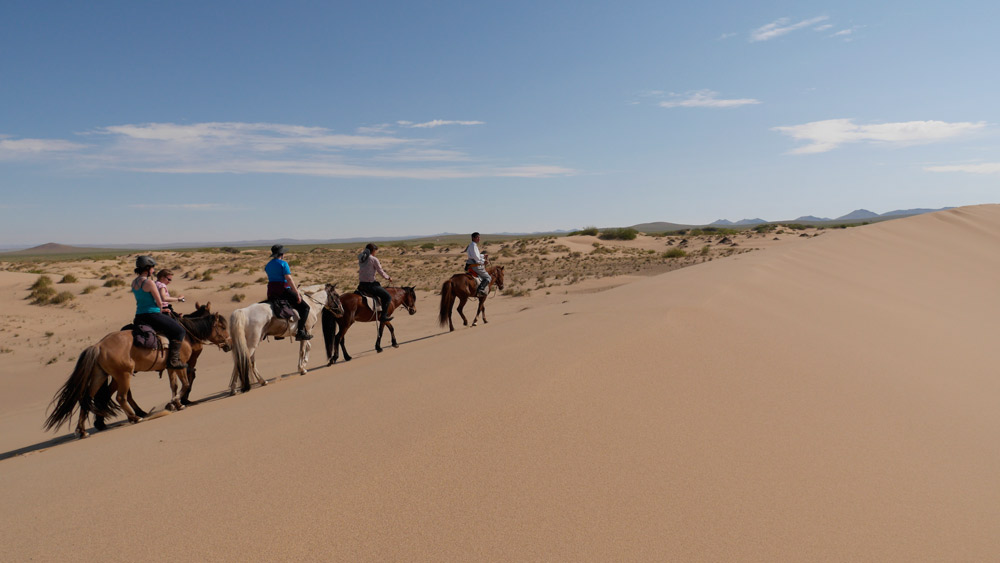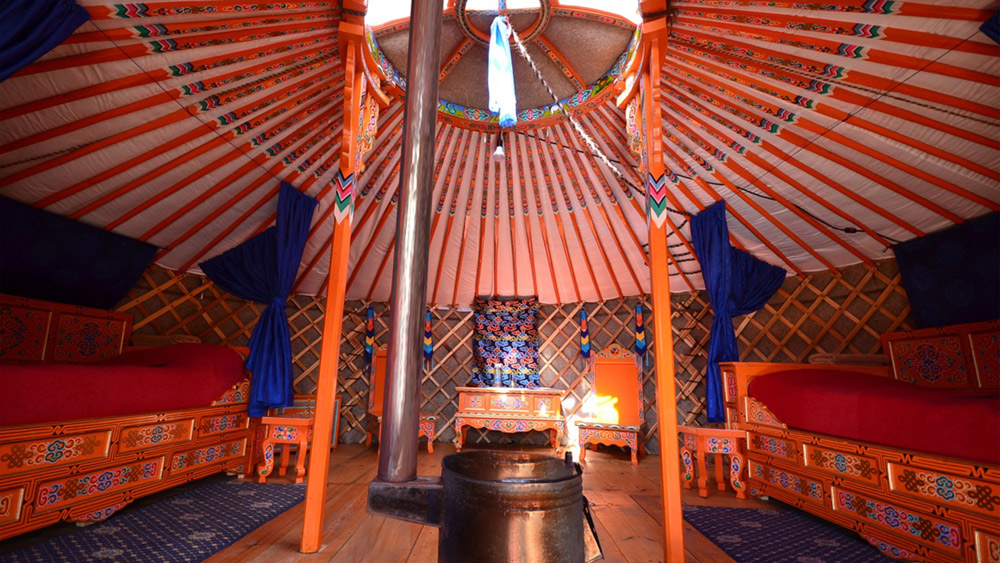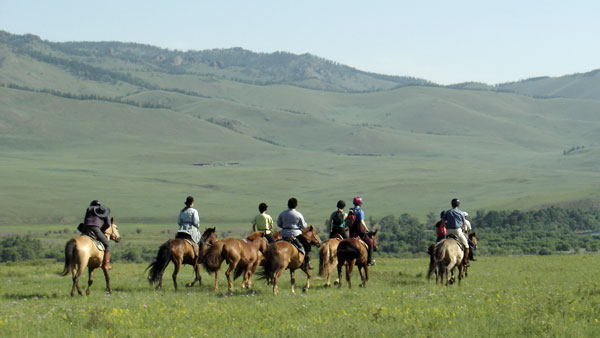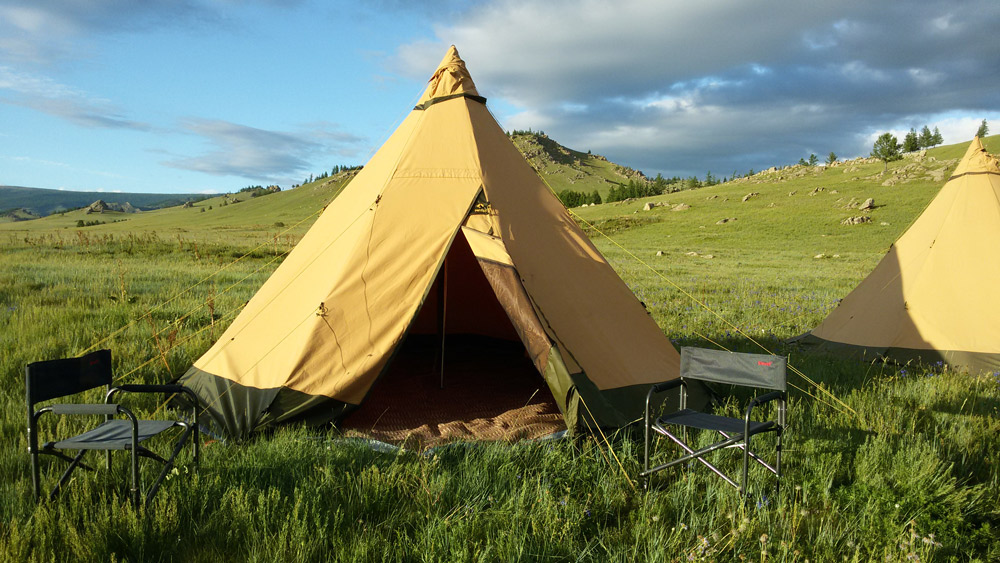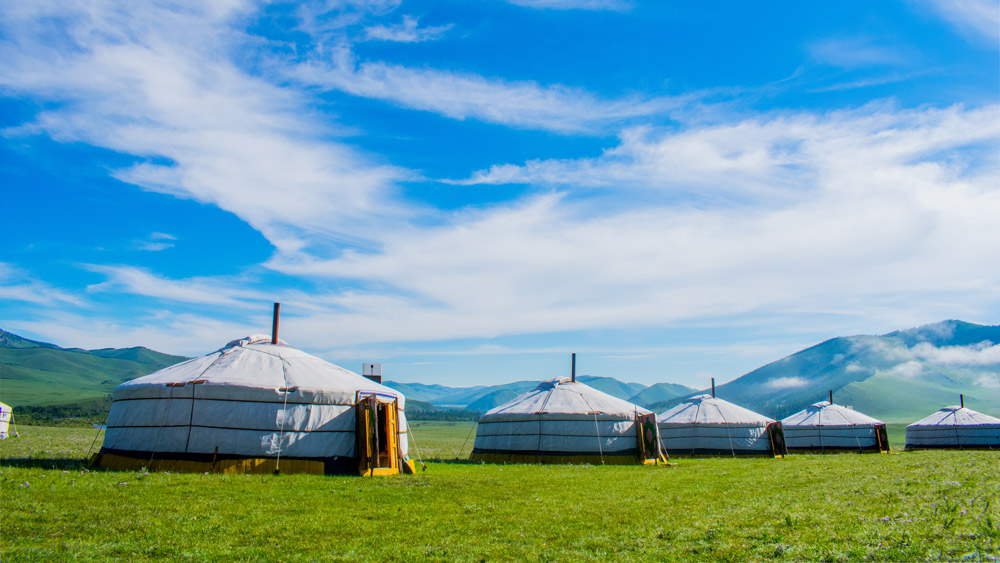This is riding tour for those who have already seen and done it all, almost ... Mongolians still alive according to the traditions that brought Genghis Khan's armies all the way to Europe.
You can choose between different rides, which can be found further down.
Ecotourism means adapting tourism to the natural conditions of the country. Tourists should not leave any trace of themselves behind, and help to preserve wild species and the environment.
Nearly half Mongolia's population are nomadic herders and completely dependent on their horses. Children learn to ride while they learn to walk. The horses live in herds and only eat grass. There are no fences and even though it can be -40 C in winter you will not see a single stable ....
Mongolia is located in the interior of Asia, and its north-western regions are as far away from the ocean as you can get on earth. The average elevation in Mongolia is about 1500 meters (5,000 ft) above sea level, and the land spreads out over two time zones across Asia’s interior. The population is 2.3 million, of which about half are nomadic herders. They keep yaks, cows, camels, sheep, goats and horses. The Mongolians have live today in much the same way as the have since before the time of Christ. Livestock production is still the largest economic activity, and the nomadic traditions have survived in this part of Asia's interior.
In the north, there are coniferous forests, the so-called Taiga (also permafrost areas on low altitude) and in the south the Gobi desert. In addition to these northern Taiga areas and southern deserts, there are steppes (in the east) and mountain ranges (Altai, Hangai and Hentii).
Zoologically speaking, we can say that in Mongolia stretches almost from camel to reindeer country! The earth's northernmost deserts are in the Uvs region in the northwestern part of the country. And Mongolia is at about the same latitude as the Czech Republic!
Mongolia is geographically spread between the Siberian Taiga and the Eastern and Central Asian flora, which is why there is so much variety. There are 2,380 species of flowering plants. In summer, you can enjoy bluebells, edelweiss and other wild flowers.
Terrain
Mongolian horses do not jump at all, because you simply do not use horse that way in nomadic society. You will work directly with real nomads and their horses, which is why this tour quite different from most other riding tours.
The terrain includes both areas for galloping and other areas where you cannot gallop. The nature of the ride changes depending on the group’s composition. Guests from England, Germany, France, Sweden, Norway, and USA and Canada can be on the tour and needs and styles differ. There are no strict guidelines as to how the tour will be run. You ride through trackless terrain and with nomads caring for their flocks. There are no pubs to go to, and no hotel where you have to be at specific times.
A cook and the provisions travel with you. The luggage moves on camel carts or yak-carts. We have a yurt, which is set up every afternoon, which is also a portable restaurant / kitchen.
Participation
You participate as much or as little as you like. The first thing Mongolians usually do on setting up camp is collect firewood to cook, then erect the common yurt, then take care of camels and horses, and finally sets up their own bivouacs, ie the collective before the individual.
Those among the guests who help with wood-gathering and putting up the yurt, also then get help with setting up their own tent. Mongolians tend to do things together. Except in the "kitchen". The chefs usually do not like visitors helping them to cook, as language barriers and the way they work are completely different from the ways you are probably used to. They cook over an open fire, and there are usually three courses every evening.
Important to remember
Mongolia is situated in highlands south of Siberia. Some seasons have been extremely hot. Ulan Bator - meteorologically the Earth's coldest capital - has exactly the same historical average temperature as northern Sweden on an annual basis. Even if the summers in recent years have not been cold, it can suddenly become cold. In August 2003, a hiking group had a couple of inches of snow in the camp one morning. The wind can be fierce. Windproof clothes are a must in the mountains.

